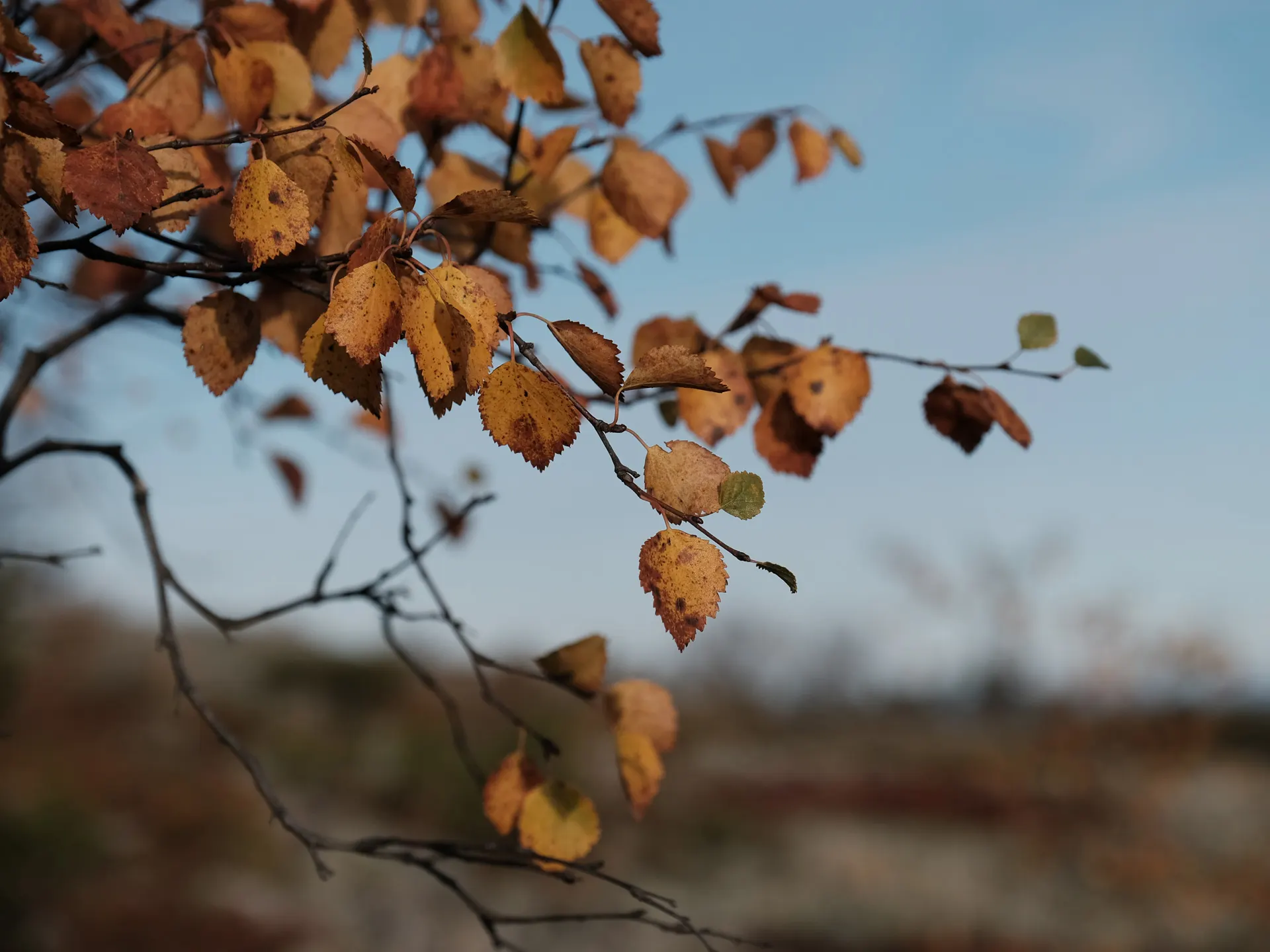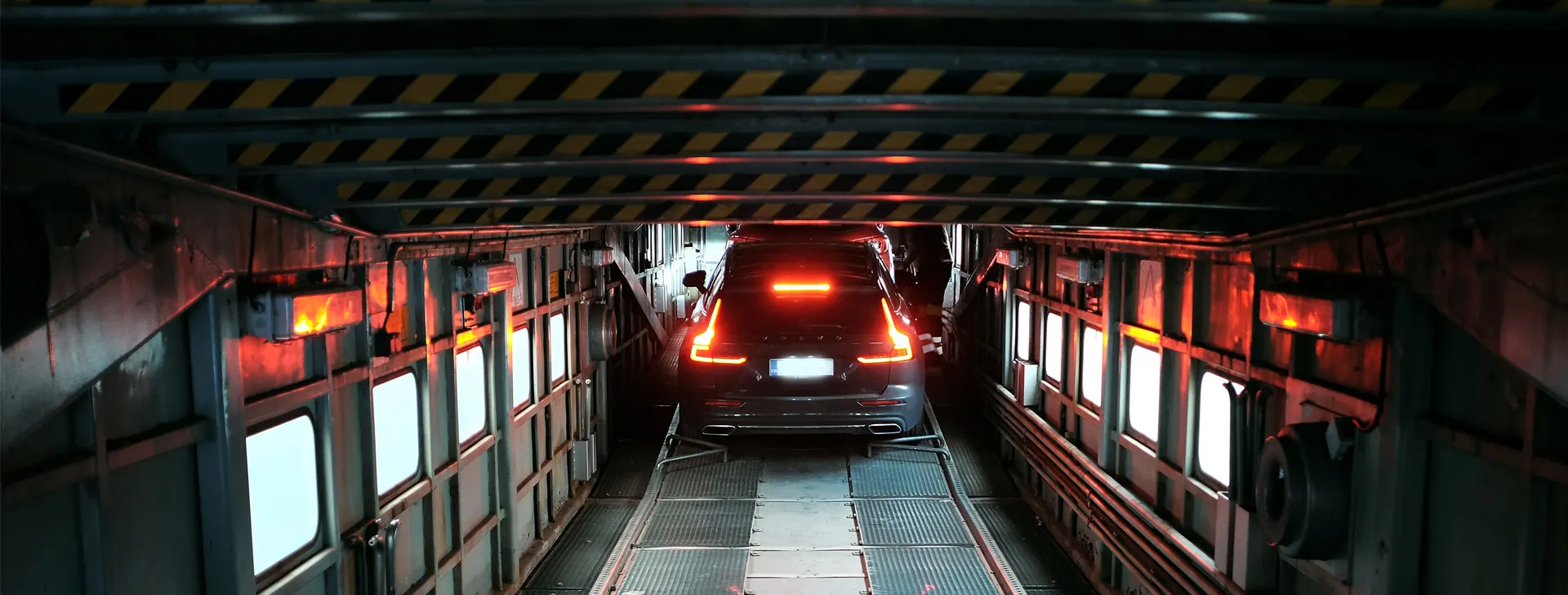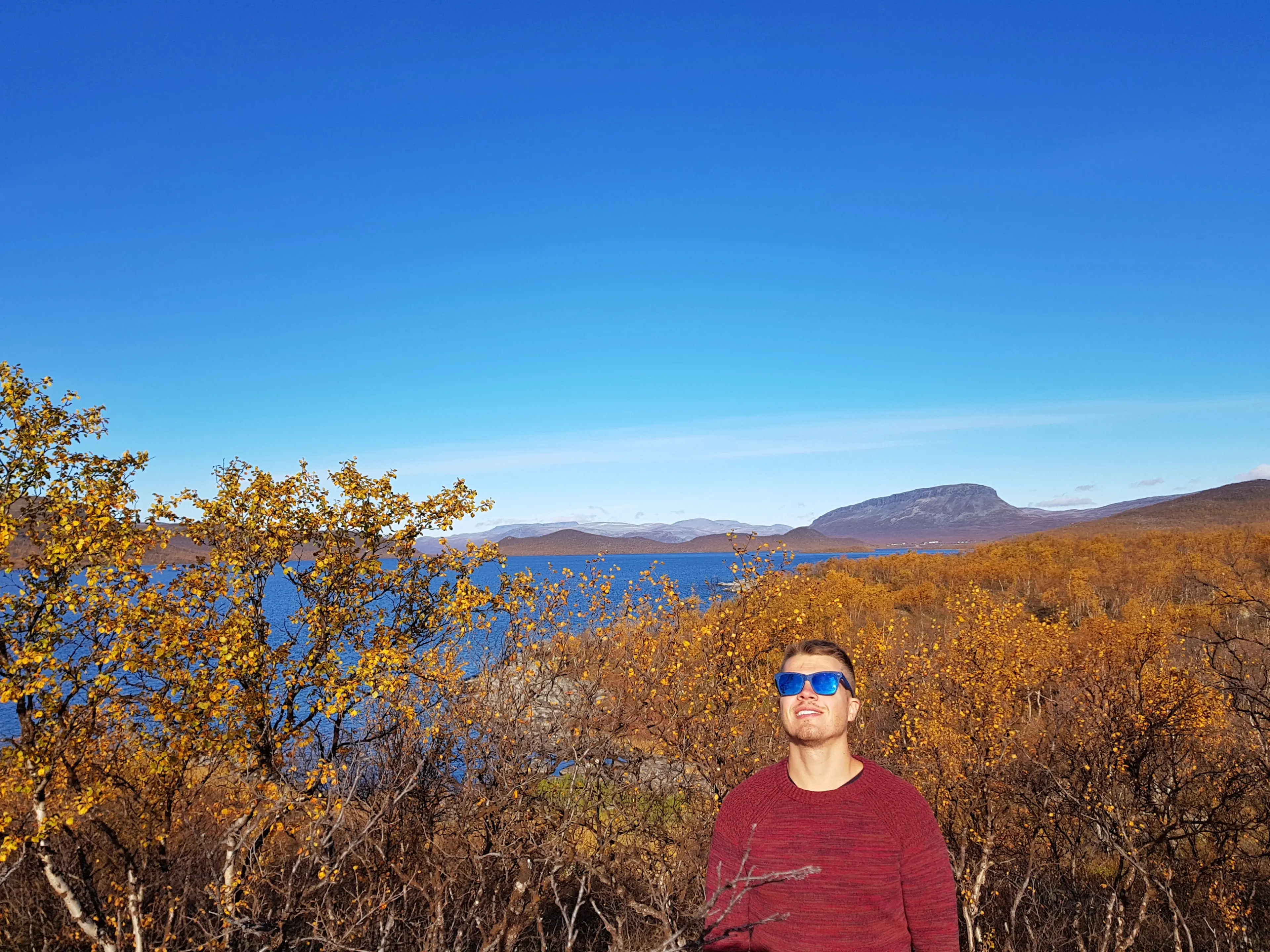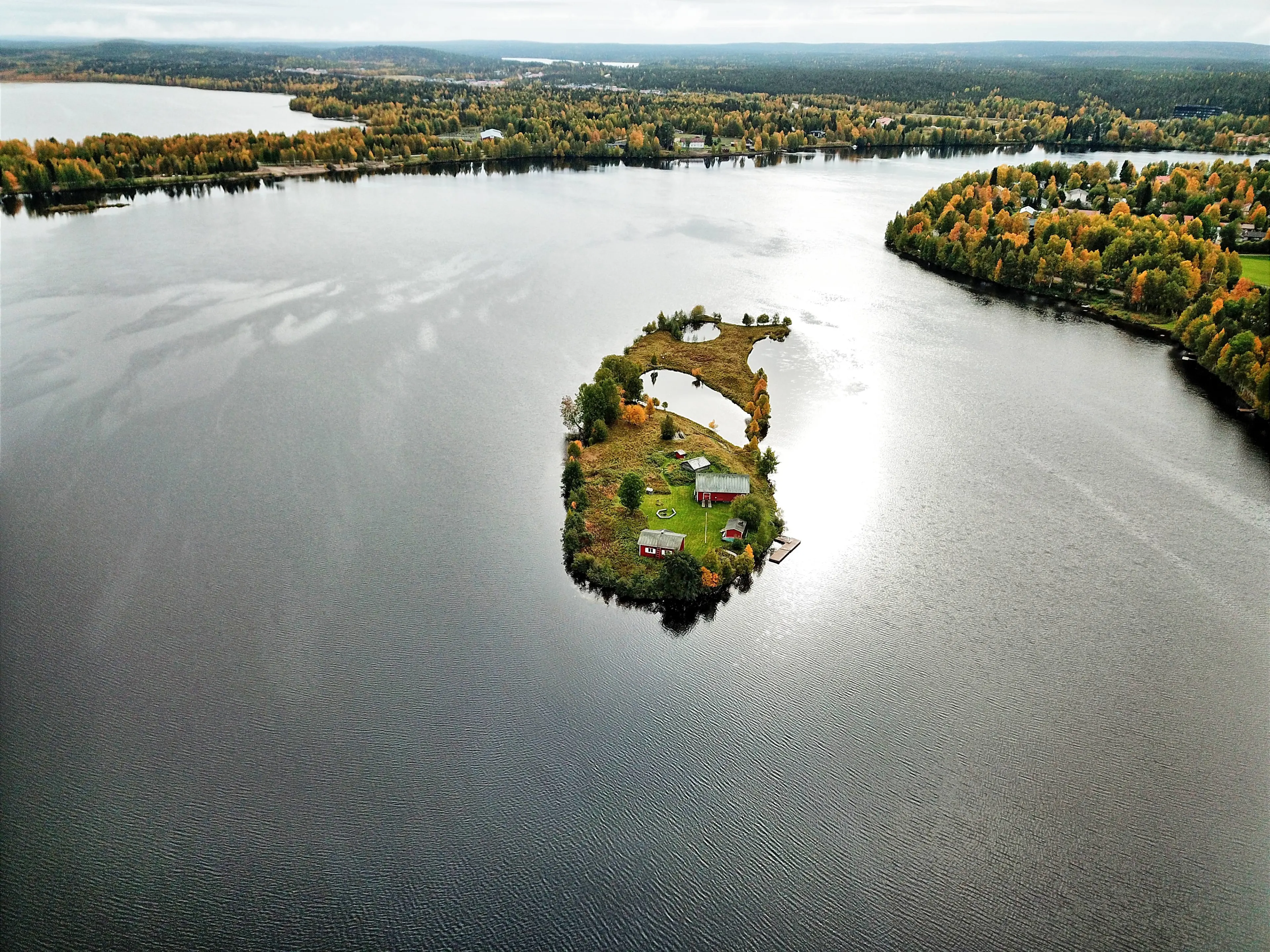
Are you dreaming of a trip to see the colours of autumn? This is how the autumn foliage travels through Finland
The autumn foliage season in Finland takes place in September–October, which is when the different colours of autumn in nature are particularly inviting. Finland’s autumn foliage is unique on a global scale, and the splendid colours last for up to two months. In Northern Lapland, the autumn colours appear on the ground already on the last days of August, while on the south and south-west coast, and especially in the archipelago, the autumn colours can be admired until the turn of October–November in some years. Meteorologist Markus Mäntykannas reveals the best autumn foliage destinations and tells us how the 2025 autumn foliage season will travel through Finland.
Autumn is a time of major changes in nature. The amount of sunlight decreases and the temperature drops in the Northern Hemisphere. The night is longer than the day for six months after the autumnal equinox.
The decrease in sunlight and colder nights trigger a process in nature that prepares plants and trees for the coming winter. The autumn foliage begins to form when deciduous trees shut down photosynthesis and, as a result, their chlorophyll breaks down and retreats into the trees' deeper layers. The colours under the chlorophyll, such as red, orange and yellow, become visible as the chlorophyll breaks down.
Did you know that the different colours of the autumn foliage are actually the true colours of the leaves and that the green colour during summer is just the leaves' “camouflage” colour? The colours of the autumn foliage hide under the chlorophyll already in summer and wait to reveal themselves until the amount of light decreases and the temperature drops.
What influences the intensity of the autumn colours?
In Finland, we can be proud of the four different seasons and our beautiful autumn foliage, as they are not a given elsewhere on the planet. The autumn foliage is a special feature of high latitudes: you don't have to go further than the Mediterranean to no longer see it.
What determines the intensity of the autumn colours and whether they appear at all?
In Finland, the depth and intensity of the splendid autumn colours depend on the weather of the previous summer. After warm summers, a lot of sugar is stored in the leaves of plants and trees, which can cause the autumn foliage to become very colourful.
If, on the other hand, the summer has been very dry, the plants will turn yellow early. After a very rainy summer, the colours of the autumn foliage may not be as intense and the autumn foliage season will be shorter on average.
The autumn foliage occurs mainly at the middle and high latitudes where deciduous trees thrive. Even in Southern Europe, around the Mediterranean Sea, the vegetation is so scarce in places that there is no autumn foliage. On the other hand, the subtropics and tropics also have a significant number of evergreen tree species that do not drop their leaves for winter.
The autumn colours are at their most stunning in Northern Lapland at the beginning of September
The autumn colours are close to my heart, which is why I have taken a night train to Northern Lapland to see the autumn foliage at the beginning of September for several years. The car has travelled conveniently on the car-carrier train, and it's only a short drive of a few hours from the northernmost train track stop in Enontekiö to the Enontekiö fells, where the autumn colours appear on the ground already in the last days of August. Autumn foliage in Lapland spreads to the arctic downy birches during the first weeks of September.
The splendid colours of autumn start in Northern Lapland. The first night frosts will start the autumn foliage season there already at the turn of August−September. The autumn colours appear in Lapland in two different phases: first on the ground and, after a delay of approximately five days, in the leaves. For example, the best autumn foliage week in Utsjoki, Ivalo and Kilpisjärvi has usually been the second week of September for years.
The splendid autumn colours of Lapland typically start and end quickly. The autumn colours last for about two weeks, after which a single strong autumn storm can cause the leaves to fall from the arctic downy birches overnight. You can monitor the autumn foliage situation in real time through Fintraffic’s road condition cameras, Opens in a new tab, for example.
Experience the unique autumn foliage of Southern Finland
Even though the nature and autumn foliage of Lapland are close to my heart and make me want to head north every autumn, there isn't always enough time for that. You don't always have to travel very far.
Domestic travel gained great popularity during the coronavirus pandemic. In the future, I believe we will increasingly want to travel slower, closer and more sustainably. Domestic travel is here to stay, and we are lucky to live in a country with comprehensive and functional transport connections.
Where can you find the best autumn foliage destinations in Southern Finland? If you wish to take an autumn foliage trip to Southern Finland for a change, I can warmly recommend a few colourful destinations. The western part of Uusimaa and Southwest Finland are the warmest and rainiest areas in Mainland Finland, which is reflected in the nature and tree species in the area. In Southern Finland, numerous tree species from the Baltic countries and Central Europe, such as maple, oak and ash, thrive.
In Karjaa, Tammisaari and Hanko, there are rare nemoral forests that reveal a completely new side of Finland, which is a spruce and pine tree heavy region. On the southern coast and in southwestern Finland, the autumn foliage lasts for a comparatively long time – you can enjoy the splendid colours throughout October.
What if you tried one of the following next autumn?:
- An autumn foliage walk and afternoon coffee in Karjaa’s colourful nemoral forests
- An autumn foliage trip to the southernmost point of Mainland Finland, Tulliniemi in Hanko
- A Baltic-style deciduous forest in Ramsholmen in Tammisaari
The autumn foliage season travels 250 kilometres a week
On average, the autumn foliage travels southwards by about 250 kilometres a week. In Rovaniemi and Kemijärvi, the autumn foliage peak usually occurs in the third week of September and in the last days of September at Oulu’s latitude. Large and warm bodies of water slow down the progression of the autumn foliage, so there are local differences in the intensity of the autumn colours, especially near large lakes and sea areas.
The autumn colours reach Central Finland, such as Jyväskylä and Vaasa, in late September, and the autumn foliage peak occurs in early October.
In Southern Finland, the autumn colours appear in early October. However, there is one special feature in the autumn foliage of Southern Finland that makes the autumn foliage season there longer than in the rest of the country: there are several species of deciduous trees, and their internal clocks tick at different rates. For this reason, the autumn foliage season can last for up to a month, especially on the south and south-west coast. The warm Baltic Sea extends the duration of the autumn foliage season in Hanko and Ruissalo in Turku, for example, which means there is still time to enjoy the autumn colours during the late autumn holiday weeks in October.
- In the first and second weeks of September, the best autumn foliage destinations are in Northern Lapland, where the autumn colours are at their finest. The autumn colours will appear on the ground already at the turn of August–September.
- In the third and fourth weeks of September, the autumn colours reach their peak in Southern Lapland, North Ostrobothnia and Kainuu.
- In Central Finland, the autumn colours reach their peak in early October.
- In Southern Finland, the autumn colours peak in the second week of October.
- On the south and south-west coast, the autumn foliage season may last until the end of October.
Tips for an autumn foliage trip to the coast and Lapland - enjoy the colours even in rainy weather
The best way to go on an autumn foliage trip is to have an adventurous spirit and the right gear for the weather. I think it’s possible to enjoy and photograph the autumn foliage even in rainy weather - nature smells different and the nature trails are less crowded. The opportunities offered by morning and evening light should also be utilised in photography, for example.
Rain is part of every season, and as a meteorologist, I have encouraged people in nature to make active use of the rain radar. The rain radar, Opens in a new tab is a real-time tool for monitoring the movements of precipitation areas and rain showers.
If you wish to go on an autumn foliage trip on the coast or in the archipelago, you should keep the following factors in mind:
- The warm Baltic Sea can intensify the precipitation areas and the wind is gusty near it.
- In the autumn, the sea can cause individual rainstorms on the shoreline, the exact timing and location of which is difficult to predict.
- The wind is gustiest at sea and nearby after low pressure when there is cold wind from the north.
- On the shoreline, the air humidity is often higher than inland, which should be taken into account when dressing.
In Lapland, the following factors should be taken into account:
- The wind is almost always stronger and the temperature is lower at the top of a fell than in valley areas.
- On rainy days, the highest fells, such as Saana, are often covered by clouds or fog.
- Clouds can also form in the fells when a humid airflow collides with them.
- The valley areas cool down quickly in the evenings in clear, lightly windy weather as a result of radiative cooling. Don't forget to wear warm clothes on your autumn foliage trip.
The combined use of weather forecasts and the rain radar allows you to safely plan your autumn foliage trip. Let’s fully enjoy our unique and colourful season - rain or shine!
Images: Markus Mäntykannas

Where to for autumn foliage?
More to read

Practical tips for car-carrier passengers
A car-carrier takes you and your car or motorcycle from one end of Finland to the other. What should you consider before the trip and at the car-carrier stations? Read our tips for a successful and comfortable journey!

By train to the Christmas market
Christmas markets are treasure troves for finding Christmas presents and getting into the Christmas spirit. We've listed the best Christmas markets in 2025 that you can easily get to by train.

Welcome, new commuter trains!
We will procure 20 new commuter trains with premium travel comfort and energy efficiency. The first new commuter trains will begin operating in summer 2026.


